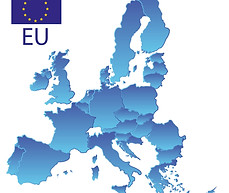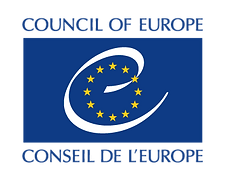WHICH IS THE DIFFERENCE?
EUROPEAN UNION
EUROPEAN vs EUROPEIST
It isn't difficult to find out the distinction between these two words. However, it is good to remember what it means being European and Europeist, because although they are not complementary, neither substitutes.
Everything that comes from one of the member states of the European continent or has its origins there is European. Most of the European countries joined the European Union, whose citizens enjoy the advantages it provides such as the free movement of people, capital or goods between countries, free trade, sovereignty or political participation.
Although there are some country exceptions such as Iceland, Liechtenstein and Norway, that aren't part of the European Union, including Great Britain since October 31st, 2019. Despite that, they have a tight relation with European countries, especially in economic fields.
In another direction, Europeists are people in favour of a federalist European Union (EU). A political entity conformed by federal states that have a greater political, economic and democratic union, advocating greater integration by renouncing to their own sovereignty.
European Federalism originated in the 19th century, a period in which thinkers such as Saint-Simon, Victor Hugo or Giuseppe Mazzini defended the need for a Federal Europe to achieve peace due to the continuous wars between countries within the European continent.
Citizens and their representatives would enjoy greater decision-making power within European politics. It is the defence of European interests over national ones, acting internationally through a single voice representing all members of the union.
The opposite movement is Euroscepticism, supporting a lesser involvement of each country in the union or renouncing to such cooperation with other countries that take part in the union. Following this path, we can find Great Britain, which population, or part of it, has been Euroscepticism for years until they have finally achieved independence from the Union.

EUROPEAN

EUROPEIST
COUNCIL OF EUROPE vs EUROPEAN COUNCIL vs COUNCIL OF THE EUROPEAN UNION
We have seen that is not the same being in the European continent and within the European Union (EU), thus we will find different institutions depending on which one we are dealing with. First of all, bear in mind that all the members of the EU enjoy participation in European institutions, but not vice-versa.
With these concepts, I will show you three institutions that may cause confusion because they have similar names, even they are so different from each other. Indeed, as you can see in the pictures below the text, the European Council and the Council of the European Union have the same logo of identification.
COUNCIL OF EUROPE
It was created in 1949, therefore it is an institution prior to the European Union.
Among its functions are the protection and defence of human rights in Europe, the promotion of democracy and the rule of law.
Within the structure of the Council of Europe, we can find the European Court of Human Rights as a control body considering itself the oldest functioning court in the field of human rights.
Currently, 47 member states make up the Council of Europe, including 27 of the European Union. Switzerland, Turkey, Norway and Russia are also part of it.
The Council of Europe is an international organization independent from the European Union.
EUROPEAN COUNCIL
The European Council is an institution formed by the political leaders - heads of Government and State - of the 28 members of the Union, as well as the president of the European Council, the president of the European Commission, and the High Representative for Foreign Affairs.
It is responsible for establishing political orientations for the European Union in general, that is, setting the priority agenda for the issues to be addressed within the EU. Among its main functions, the European Council define the common foreign and security policy of the Union, designate the positions for certain higher instances - such as the European Commission or the European Central Bank - and resolve the most sensitive and complex political issues, such as granting an extension to Brexit.
COUNCIL OF THE EUROPEAN UNION
Same as the European Council, the Council of the EU is part of the institutional structure of the Union. It is also known as "The Council".
It is comprised by one minister of each member state of the Union. Therefore, they work or meet depending on the matter. For example, when there is an economic issue, just the ministers of Economy of all the member states get together on the meeting. They make decisions on behalf of the Government they represent and participate in the legislative process together with the European Parliament.

